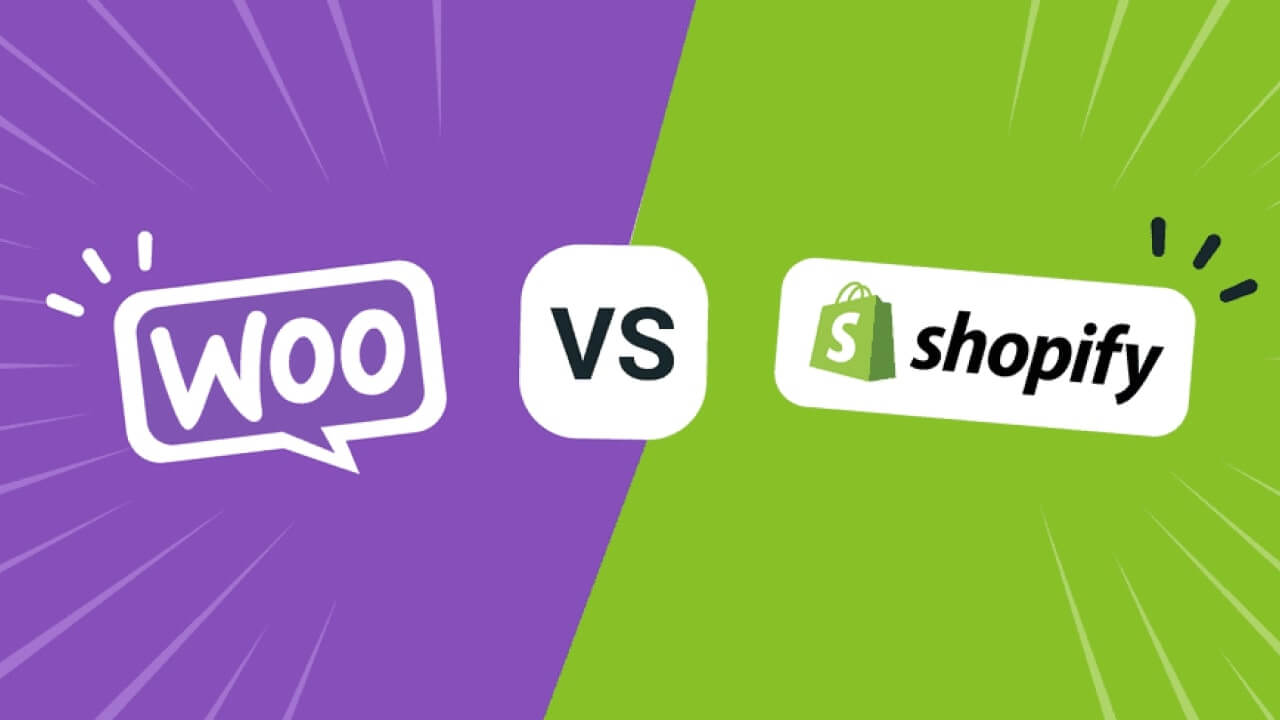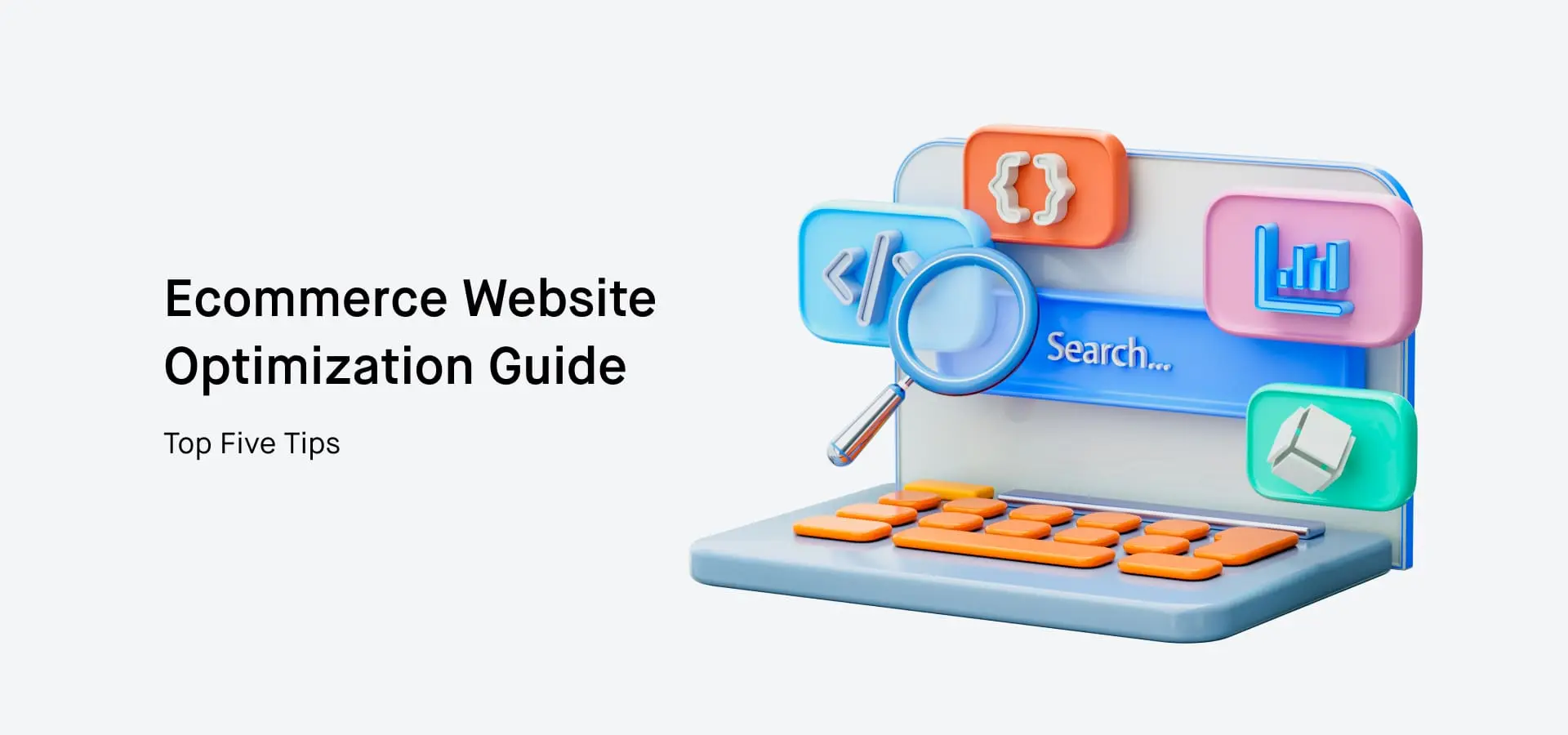The 7-Step SEO Checklist for Small Business Websites in Ireland

Running a small business in Ireland is not that simple. Your local shops, big brands, and even online stores are your competitors. To grow, people need to learn about your business quickly. This is where SEO helps.
Search Engine Optimization simply makes your website easy to find on Google. Suppose you have a shop on a street that is always busy with people. If you have a big and clear board, people will see it and visit your shop. If your board is hidden or small, they will walk past without even noticing it. That’s how Google works.
Most people never go past page one on Google. If your business is stuck on page two or three, it’s near to being invisible. Good SEO can move your website higher. This means more people visit your site. More visitors give you more chances to make sales.
The good news? You don’t need to be an expert to get started. In this blog, we’ll share a simple 7-step checklist made just for small business owners. It’s easy to follow, and you can start right away.
Here’s what we’ll cover:
- Make your site mobile-friendly.
- Use the right keywords.
- Improve your site speed.
- Write quality content.
- Get backlinks.
- Set up your Google Business Profile.
- Track your results.
By the end, you’ll know the basics of SEO for small businesses’ websites in Ireland. You’ll also see why good small business website design makes SEO even stronger.
Effective Steps to Checklist for Small Business Websites in Ireland
In this section, we will have a look at some steps that will help you in understanding the SEO checklist for small business websites in Ireland.
Step 1: Make Your Website Mobile-Friendly
Most people in Ireland use their phones to search online. If your website doesn’t look good on a phone, visitors will leave fast. A mobile-friendly design is no longer extra, but it’s a must.
- Why it matters:
Google gives better ranking to mobile-friendly sites.
People won’t stay if the site is hard to use on their phone.
Mobile users often buy quickly than desktop users.
- How to fix it:
- Keep your design simple.
- Use big fonts that are easy to read.
- Make buttons big enough to tap.
- Don’t overload pages with text.
- Always test your site on different devices.
- How People in Ireland Browse the Internet
| Device | % of Users |
| Mobile | 65% |
| Desktop | 25% |
| Tablet | 10% |
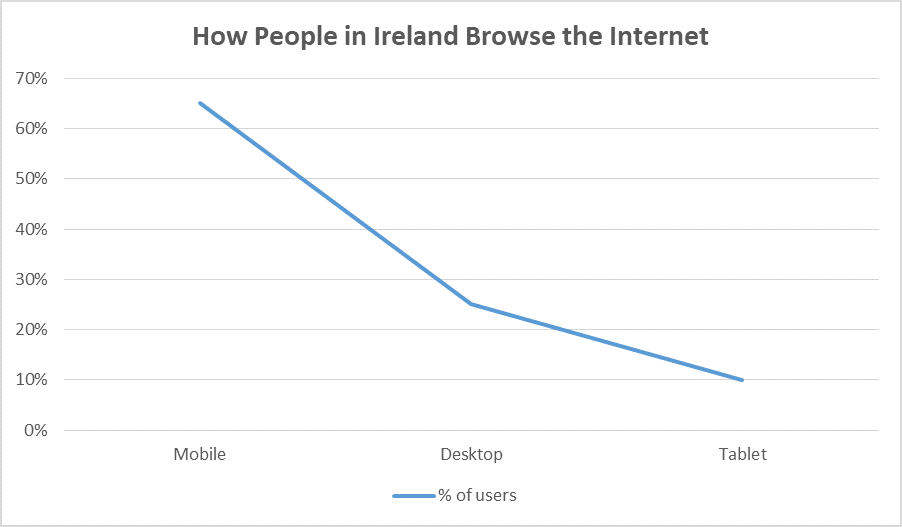
This illustrates why optimizing your site for mobile use is a crucial first step in SEO.
Step 2: Use the Right Keywords
Keywords are words people type on Google. If you know them, you can match your website to what people search for.
- Why keywords matter
They connect you with real customers.
They tell Google what your page is about.
They ensure your site appears for the relevant searches.
- How to find keywords
Think like your customer. What would they type?
Opt for free tools like Ubersuggest or keyword planner.
Look for what your competitors use on their websites.
Add local words. Example: “SEO for small businesses website Ireland” or “plumber Dublin.”
- Types of keywords
| Keyword Type | Example | When to Use |
| Short keyword | “web design” | General idea, more traffic but harder to rank |
| Long keyword | “affordable web design Dublin” | Easier to rank, more exact |
| Local keyword | “small business SEO Cork” | Great for local business Small checklist |
- One main keyword per page.
- Add it in the title, headings, and first paragraph.
- Don’t stuff. Write naturally.
- Use related words (synonyms, simple variations).
- Simple example
- Bad
“We offer web design. Our web design is the best. Our web design is cheap.”
- Good
“We help small businesses in Dublin with affordable, modern web design solutions. Our goal is to make websites simple and fast for local customers.”
Step 3: Improve Page Speed
People leave slow sites. Google does too. A fast site helps your SEO and your sales.
- Why it matters
Slow pages lose visitors.
Fast pages rank better.
Speed is an essential component of effective small business website design.
- Quick fixes you can do
- Compress images to JPG and WEBP, not PNG.
- Remove heavy sliders and autoplay videos.
- Minify CSS and JS (make files smaller).
- Turn on caching.
- Use lazy-load for images below the fold.
- Pick a good host. Cheap, slow hosting hurts.
- Cut unused plugins.
- Simple tools to check speed
- Google Page Speed Insights
- GTmetrix
- WebPageTest
- Page Speed vs Bounce Rate
| Page Load Time | Likely Bounce Rate |
| 1–2 seconds | 10–20% |
| 2–3 seconds | 20–35% |
| 4–5 seconds | 40–55% |
| 6+ seconds | 60–80% |
- Tip: Aim for under 3 seconds on mobile and desktop.
- Mini checklist
- Images under 200–300 KB where possible
- No popups on first load
- Fonts limited (1–2 families)
- Test on a real phone
Step 4: Write Quality Content
Content is how people find you. Answer real questions. Keep it clear. Keep it local.
- What to write
- Service pages
What you do.
- Location pages
Where do you work?
- Frequently asked questions
Quick answers.
- Blog posts
Tips and how-tos.
- Case studies
Before/after, results.
- Guides/checklists
Step-by-step help.
- Testimonials
Proof you’re trusted.
- Keep it simple
Write for people first. Google second.
- Use short sentences.
Add headings (H1, H2, H3).
- Use your main keyword naturally.
Add local words: city, area, and landmark.
- Page Type vs Purpose
| Page Type | Purpose | How Often |
| Service Page | Explain what you offer | Set once, update yearly |
| Location Page | Rank in each town/city | Add as you grow |
| Blog Post | Teach and attract new visitors | 2–4 per month |
| FAQ Page | Quick answers, long-tail SEO | Update monthly |
| Case Study | Show results, build trust | 1–2 per quarter |
| Guide/Checklist | Deep help, earns links | 1 per quarter |
- Simple content plan for one month
Week 1: Blog (how-to)
Week 2: Add/upgrade FAQ
Week 3: Case study
Week 4: Update a service page
| Service Pages | High |
| Guides/Checklists | Strong |
| Blog Posts | Good |
| FAQs | Good |
| Case Studies | Medium |
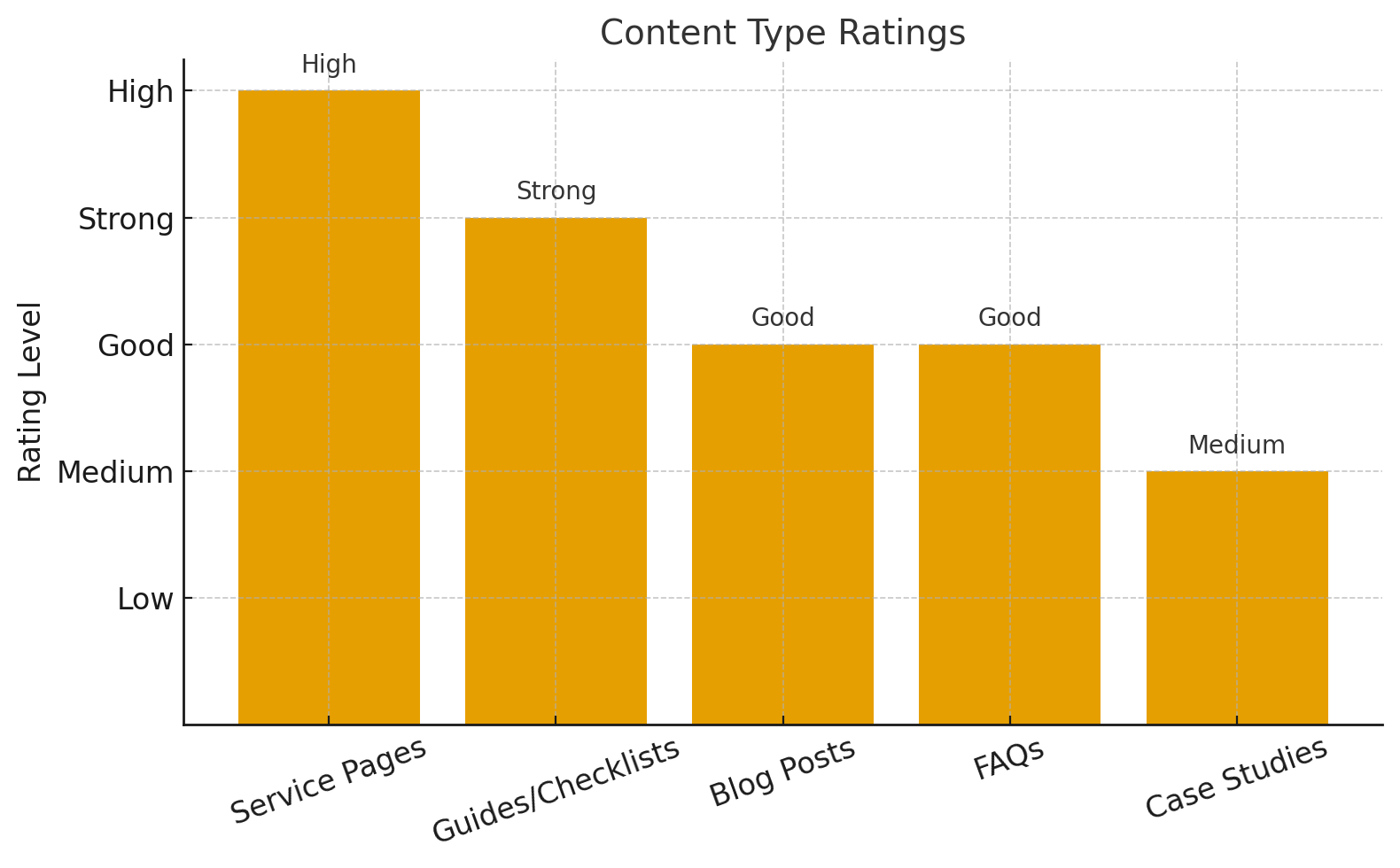
Bar chart showing whose content pulls traffic.
- Pro Tip
Add photos, short videos, and real customer quotes. It helps users stay longer. It helps SEO as well.
Step 5: Make Quality Content
Content is what people come to your website for. It can be product pages, blogs, FAQS, or guides.
- Good content answers questions.
- It builds trust with readers.
- It keeps people on your site longer.
- Tips for strong content
Write short and clear.
Use simple words.
Add images, charts, or videos.
Update old posts with new info.
Cover topics people search for and use your keywords.
- Example:
If you run a bakery in Cork, write a blog like “Top 5 Cakes for Birthdays in Cork.” In this way, people who are searching for cakes may find you.
Step 6: Pay Attention to Local SEO
Mostly, small businesses depend on local customers. Local SEO ensures that people in your area can easily find you.
- How to do it
- Add your business to Google Business Profile (free).
- Use local keywords, such as “best café in Galway.”
- Ask your happy customers to leave positive reviews.
- Ensure that your address, phone number, and hours are accurate everywhere online.
- Why Local SEO Matters
| Local SEO Step | Impact on Business |
| Google Business Profile | Shows on maps + local searches |
| Customer reviews | Builds trust, attracts new clients |
| Local keywords | Brings nearby traffic |
| Correct info everywhere | Avoids confusion |
Step 7: Track and Improve
SEO is not “set and forget.” You need to check what’s working and improve.
- What to track
How many visitors come to your site?
Which keywords bring traffic?
Which pages do people like most?
Where your site ranks on Google.
- Free tools to use
- Google Analytics
Shows visitors.
- Google Search Console
Shows keywords and errors.
- Simple tip
If one blog brings lots of traffic, write more like it. If a page receives no visitors, consider improving or removing it.
- Graph Example:
Visitors to a website after 6 months of SEO:
Month 1 → 50 visitors
Month 3 → 200 visitors
Month 6 → 500 visitors
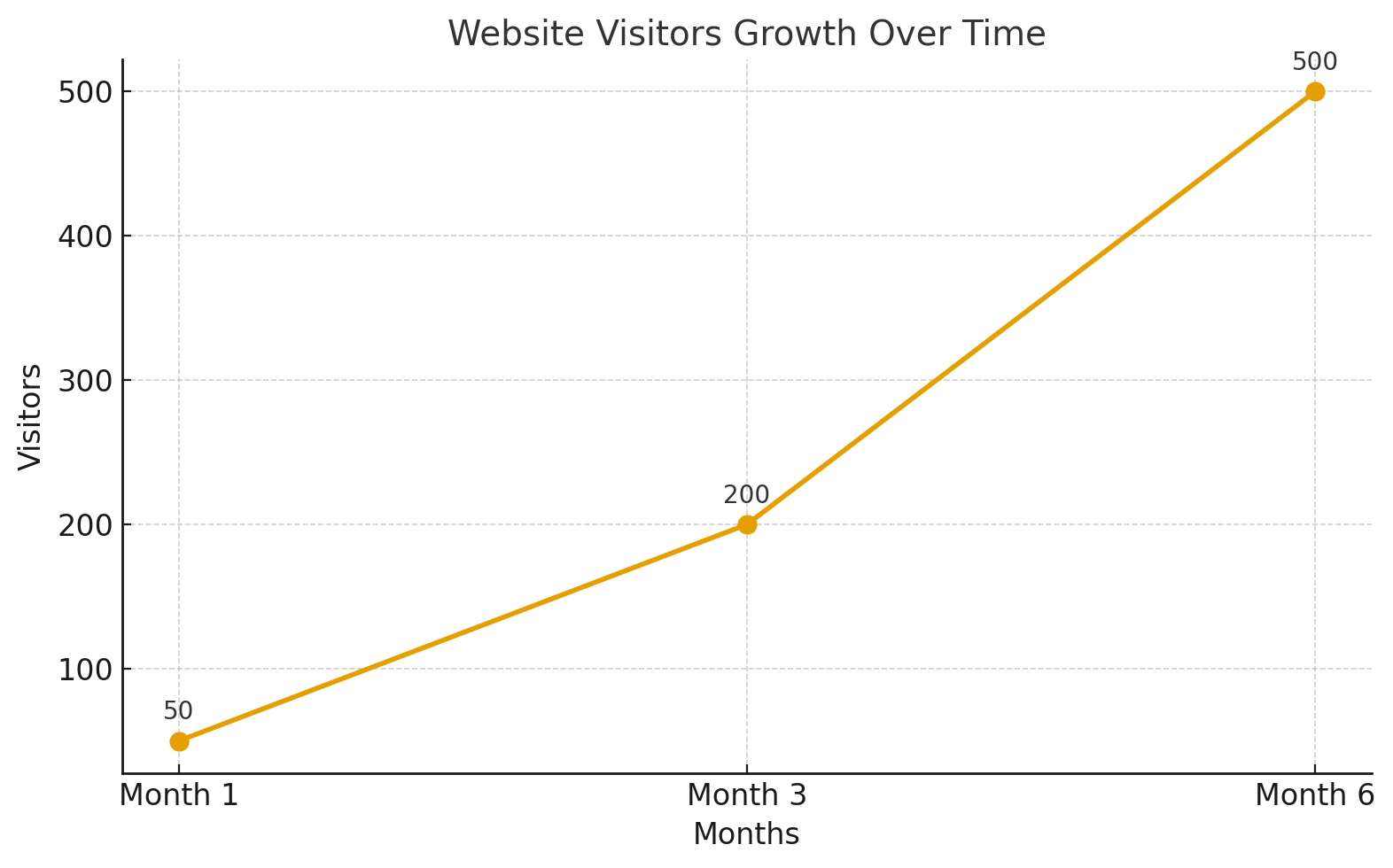
Frequently Asked Questions
How long does it take for a small business website to rank on Google?
Ranking on Google does not happen overnight. Mostly, small business websites take a few months to show up high. You need to be patient with it and keep working on it.
Can I do SEO for my small business website myself?
Yes, you can get started by taking small steps. Use easy keywords, write small blogs, and add your business to Google. If it feels too much, you can always ask for help.
Why is mobile-friendliness so important for small business SEO?
Because most people search on their phones, if your site appears poorly or loads slowly on mobile, they will likely leave. Google also notices and ranks you lower.
Conclusion
SEO is not like magic. It is just small and effective steps that help people find your business online. Keep your website fast, use the right words, and write the content that answers questions. Slowly, but surely, your website will grow.
Consider it like running a shop. If you have a big board outside, keep your shop nearby, and greet people nicely, more customers will come to you. SEO is similar to this, but it’s done online.
Don’t forget mobile users. Most people in Ireland search on their phones. If your site works well on mobile, visitors will stay longer and trust you more. In the end, the future of your small business website depends on how easy you make it for people to find you. Start early, stay steady, and let SEO bring new customers to your door.

